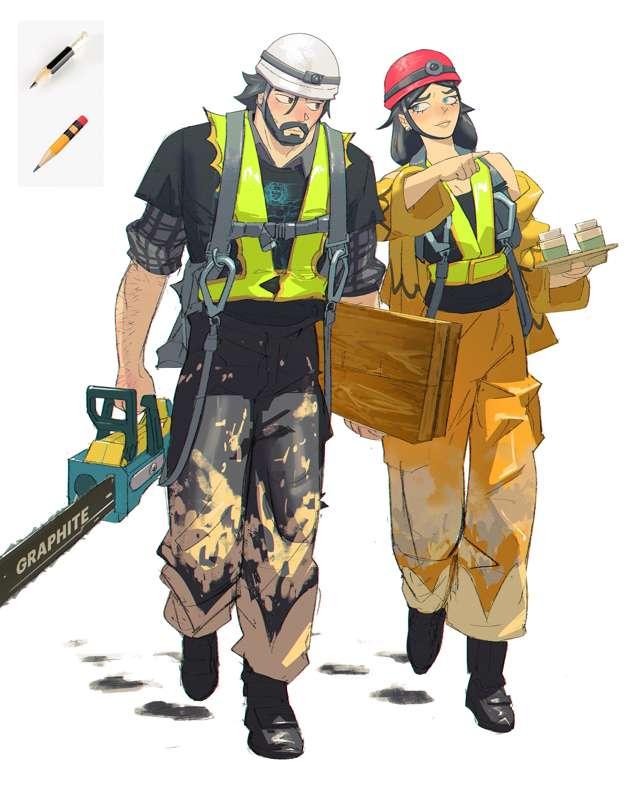ramonn90
Finding Art in the Everyday: 3 Tips for Turning Any Object into Art
Published: June 2nd 2023, 4:00:11 pm







Hey all!
Before I move forward with the post, I'd like to kindly remind you not to add new pins to the "Ramon Personal References" board. This board was created for me to curate references for you. Adding new pins from other patrons is not allowed. Feel free to pin these to your personal boards, but please refrain from adding new pins here. Thank you.
Today, we're going to tackle a subject that might be a stumbling block for many artists out there: turning everyday, ordinary objects into unique, creative concepts. And, not just any objects, we're focusing on those you wouldn't typically consider "interesting" from a photography perspective, let's call them 'non-easy' references.
Many artists rely heavily on beautiful, evocative photographs for inspiration. While this isn't necessarily bad, it can limit your creativity. The photographer has already done a great deal of the creative work by composing the shot and capturing the mood. This is where our 'non-easy' references come in.
Why is this significant? Well, it pushes you out of your comfort zone, broadening your creative horizon and enabling you to spot potential in the unlikeliest of places. Let's dive in, using a "pencil" as an example, an object so ubiquitous that we often overlook its potential. Here are 3 tips!
1. Question the Ordinary:
The Art of Deep Thinking Begin by questioning your reference – in this case, the pencil. A series of exploratory questions about the subject could include, "What is a pencil?" "What's its function?" "Where did pencils originate?" The aim is to acquire a comprehensive understanding of the subject, which then becomes the building blocks for your art.
Pro tip: Don’t just skim the surface. Dig into the symbolism, history, cultural relevance, and even scientific aspects of your subject. The more information you gather, the wider the canvas for your creativity.
2. Aligning Art with the Reference:
Once you've gathered enough knowledge about your reference, consider how it can connect to your character or illustration. Can the pencil be part of your character's outfit or shape? Can you use its color palette? For example, as you can see in my character design exploration. I designed a pair of construction workers based on the black and yellow pencils. Their boots are black, mimicking graphite, leaving charcoal-like footprints on a white floor, while their helmets are mimicking the color and shape of an eraser. The possibilities are endless!
Pro tip: The function of the subject can inspire your character's actions. If a pencil is typically used for writing or drawing, maybe it inspires your character to communicate or create.
3. Creative Twists and Turns:
The Unexpected Angle The most compelling art often comes from viewing something ordinary in an extraordinary way. So, push your imagination. How can you interpret the pencil differently? Continuing with our example, the man is holding a saw, but it's not just a saw, it's a pencil sharpener. The woman is carrying two coffees, subtly inviting the man for a chat, symbolizing the pencil's role in communication and adding a layer of momentum with which the viewer can relate.
Pro tip: Think metaphorically. This opens up new perspectives and fosters innovative concepts.
.
In conclusion, an ordinary object, like a pencil, won't provide an obvious story or emotion. It forces you to think, to explore, and to create something truly original. It's a fantastic antidote to creative block and the ‘photographer’s shortcut’.
Stretching your creative muscles can seem daunting at first, but with these strategies and a healthy dose of curiosity, you'll soon be turning the most mundane of objects into extraordinary art pieces. If you ever need a brainstorming buddy, remember, our Discord community is always here for you.
For the next post, I'll be sharing more technical tips about this process along with the process video and PSD files. Those in the "Mastering Maestro" tier and above, be sure to keep an eye out!.
As artists, our power lies in our ability to see the extraordinary in the ordinary. It might seem daunting at first, but with these strategies and a bit of curiosity, you'll find yourself transforming non-easy references into captivating art pieces in no time. If you're feeling a bit stuck or just need someone to brainstorm with, our Discord community is always open.
Welcome to the new patrons! If you have any questions, send me a DM or join our Discord community. I typically respond in less than 24h.
For more information, check out our Patreon FAQ: https://ramonn90.myportfolio.com/faq and Patreon Catalogue: https://ramonn90.myportfolio.com/work
Thanks for reading and thank you for your continued support! Have a great weekend :)